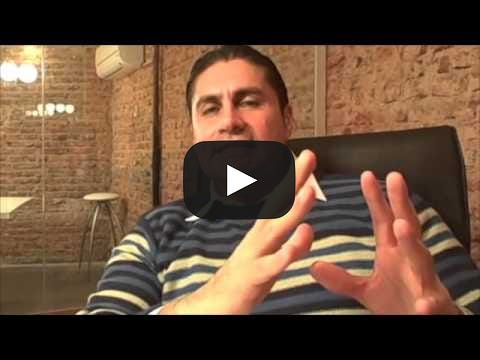You’re reading the My News Biz newsletter, which I will be sending you every other Thursday. My goal is to help you and other digital media entrepreneurs to find a viable business model that works for you. If you were forwarded this email, you can sign up here. How NOT to finance a news startupLayoffs and cutbacks at big digital news sites show that less is more -- usuallyYou’re reading the My News Biz newsletter. My goal is to help digital media entrepreneurs find viable business models. One of the biggest mistakes that many news startups make is to burn through their cash before establishing a solid revenue base. And actually, they’re no different from other startups in this regard: They want to gain market share rapidly with free or low-cost products that attract users. But their revenue model is neglected and they run out of cash. Francisco Coronel, a venture capital specialist, explained to me once why so many startups “fall into the Valley of Death”.
Coronel explains this in a two-minute video below (in Spanish with subtitles). burn  Coronel made his comments years before some of the current media cutbacks and failures we’re seeing now. But here are some.
What about nonprofits?These huge organizations all have a for-profit motive. But the lessons are relevant to nonprofits whose mission is public service, the public good. Perhaps the most eloquent and credentialed source of information on sustainability of trustworthy, credible news is Richard J. Tofel, who writes the Second Rough Draft newsletter. He was the founding general manager of the nonprofit investigative news site ProPublica, and its president from 2013 until September 2021. A sample of some of Tofel’s thoughts. In A hard look at news sustainability, he writes, “For me, sustainability means nothing more or less than the goal of building something enduring, an institution that transcends its founders and finds a path to making a continuing contribution to its readers and community.” And, “From the outset, sustainability requires taking business operations as seriously as editorial. Over time, that means building a robust and independent business staff.” In his A few words in celebration of the failure of newer newsrooms he argued that “the low failure rate for digital news nonprofits — 6% — over a long stretch of time” was not a proof of resilience. Rather, “I’m afraid it’s a sign of funder timidity, founder stubbornness and industry stagnation.” Too often, he believes, they prop up organizations that should be allowed to fail — even though their journalism is praiseworthy. Don’t throw good money after bad, he believes. The wrong and right questionsBased on my work coaching media founders, I believe the biggest mistake that startups make is to start with the question, How can we make more money? That’s the wrong question. They should start with the question, Do we really know who our customers are, and what are their needs in terms of information? In other words, What are their problems in terms of getting information useful to their daily lives? How can we help solve those problems? You can find out through focus groups, polls, or through interviews of friends and family. Create valueAfter you know something about your target audience, you can try to create value for them. But the important question is, What do they consider valuable? What is valuable enough to them that they would be willing to pay for it? You can create value in lots of ways, not just with content. It could be the distribution channels you use. You could publish in a format that your community values, such as videos or podcasts. You could also create value through presenting data in visually attractive and informative formats, such as maps and graphics. And then you can test your assumptions by putting your content in front of users and measuring how they interact with it. Only then you can begin to talk about monetizing the audience. The monetization issue flows from understanding those first two points: Who our customers are and how we can create value for them. Conclusions and parting thoughtsI’ve worked with dozens of digital news startups in various incubators and accelerators in Latin America, Spain, Eastern Europe, the Middle East, and East Asia. I’ve coached dozens more startup founders in other workshop and classroom settings. Without exception these startups have a noble mission and are headed by people dedicated to serving their community. And almost without exception, their teams lack expertise in marketing, sales, and administration. I hope I helped them with these relatively mundane considerations. Many face more serious obstacles such as government sanctions, physical threats, and active sabotage of their operations. In many countries where I’ve worked, journalism is a high-risk business. They have to be endlessly creative and innovative to deal with all of the obstacles thrown in their path. I keep returning to the guiding principles of Ignacio Escolar, founder and CEO of elDiario.es, a digital news startup in Spain that is a model of wise fiscal management and high quality journalism. “Journalism is not a business but a public service,” Escolar says. “But it’s a public service that has to be profitable to survive.” And profit in that context is not a dirty word. You're currently a free subscriber to My News Biz. For the full experience, upgrade your subscription. |
El Maratón Palm Beaches de U.S. Polo Assn. celebra un fin de semana
histórico en West Palm Beach, Florida
-
Miles de corredores de todo el mundo participan en el fin de semana de
carreras en el sur de Florida, con Ivan Gabriel Mafla Bolanos de Ecuador
como ganado...
Hace 1 hora












No hay comentarios:
Publicar un comentario